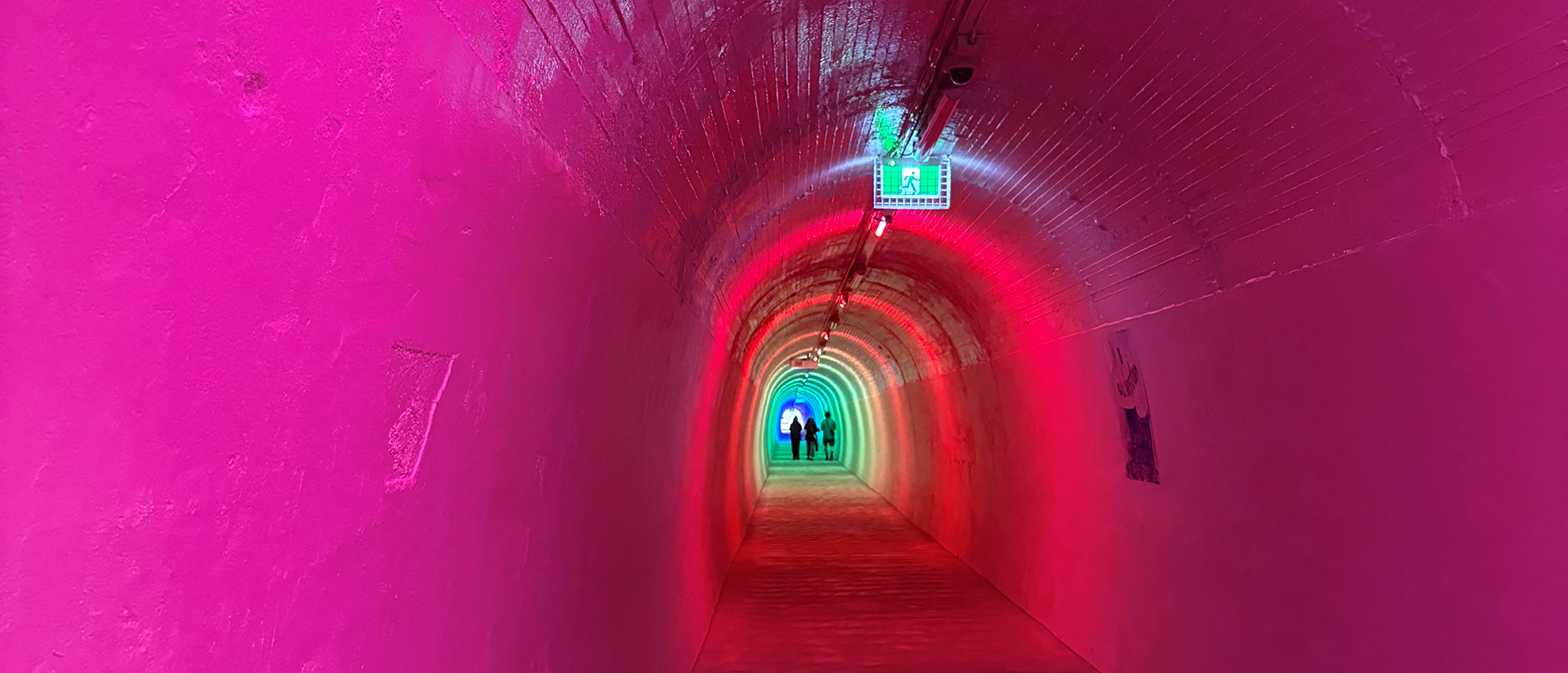
Whanganui: creative immersion
Get a hands-on experience of creativity and culture in Whanganui.
The sun rises over the Hawke’s Bay horizon. Waves crash on the white rocks at Cape Kidnappers. A braided river lined with poplar trees flows through gravel beds. And then come the vines, stretching to the feet of sheltering hills.
I swirl the splash of pale chardonnay in my glass and drink in the digital scenery unfolding in front of me. Apart from the bright landscapes on the giant screen, the room is dark. I am immersed in a theatre of wine, an oenothèque. This is the Heretaunga Wine Studio in Havelock North, a unique wine tasting experience that allows us to experience the stories behind the Smith & Sheth wines from the comfort of leather couches.

An oenothèque roughly translates as a ‘wine library,’ manager and host Sean Burns explains. It’s a setting for storytelling as well as plenty of sampling. We learn about the background of the founders, Steve Smith, a Master of Wine, and Brian Sheth, a passionate wine afficionado; the trials and tribulations of the New Zealand wine industry and the subtle but distinctive variations in taste between wines that have been grown in different parts of the same vineyard. Wine is liquid geography, Sean says. The literal taste of a region.
And Hawke’s Bay is a tasty region. Not only is the chardonnay arguably the best in New Zealand, Hawke’s Bay is also renowned for its abundance of produce.
The next day we drive under big blue skies to Napier. Netted fig trees are bright with new season growth; neatly trimmed hedges hide vast apple orchards coated in candy floss blossoms. Along the roadside pink petals are scattered like drifts of wedding confetti. It feels celebratory. And Napier itself seems to be dressed appropriately with its pastel Art Deco buildings popping against the cerulean sky.
To learn more about the city’s unique and tragic origins, we climb into an immaculate 1940 Packard, all shiny chrome and smooth chocolate leather, for a vintage car tour. Tony, our guide, is a volunteer with the Art Deco Trust, a group established to preserve and promote Napier’s distinctive history.

From the open topped Packard, we can appreciate the city’s Art Deco architecture, looking up beyond the modern storefronts and shouty signage to see the zig zags, speed lines and sunbursts synonymous with deco design.
“Bahoooga” goes the Packard horn as bemused pedestrians and café patrons swivel to watch the beautiful vehicle crawling along city streets. We feel like celebrities. I suppress an urge to wave regally.
Tony explains the history of Napier, how the town was originally squished onto Scinde Island, now Bluff Hill, where the wooden villas that survived the 1931 earthquake remain. The 7.8 quake that struck at 10.47am on February 3, 1931, is still New Zealand’s worst natural disaster, killing 256 people, which was about 1% of the population at the time. It also produced a staggering 8,500 acres of new land in just two minutes as the quake jolted the estuary and marshlands around Ahuriri out of the sea.
This new land, and the fact that the quake happened in the thick of the Great Depression meant that there was a huge incentive and a large amount of willing labour to rebuild the city. And it all happened in just 22 months. By the end of the decade, Napier was the most modern city in the world with wide, vehicle-friendly streets, undergrounded utilities and an abundance of fertile new land that set the scene for its food-producing future.

We sample more of that local produce – expertly prepared and delicious: Hawke’s Bay lamb and new season asparagus at the intimate Cellar 495 wine bar in Hastings; kaimoana with Asian flavours at the luxe Madame Social on the harbour’s edge in Ahuriri.
But for raw ingredients we go straight to the source. The Hawke’s Bay Farmers’ Market is renowned as being one of the largest and longest-running markets in the country. It’s another shining day in the Bay and the market bustles with shoppers and buskers, energetic children and many cute dogs. Fuelled by strong, locally-roasted coffee we browse stalls selling sourdough and sweet treats, condiments and crockery. We buy wedges of interesting cheese and an enormous bundle of asparagus to take home.

For our last stop, we zoom out. Or rather, we zoom up. Choosing the lazy option of a drive, rather than a walk up Te Mata Peak, passing panting, virtuous weekend warriors. From the Te Mata trig, Hawke’s Bay spreads out in a 360-degree panorama – the vineyards and orchards; the pockets of industry and architecture, the restaurants and wine bars and the shining coast – like a pick n’ mix of things to discover on our next visit.
Story by Jo Percival for the Summer 2024 issue of AA Directions Magazine. Jo Percival is the Digital Editor of AA Directions magazine.
